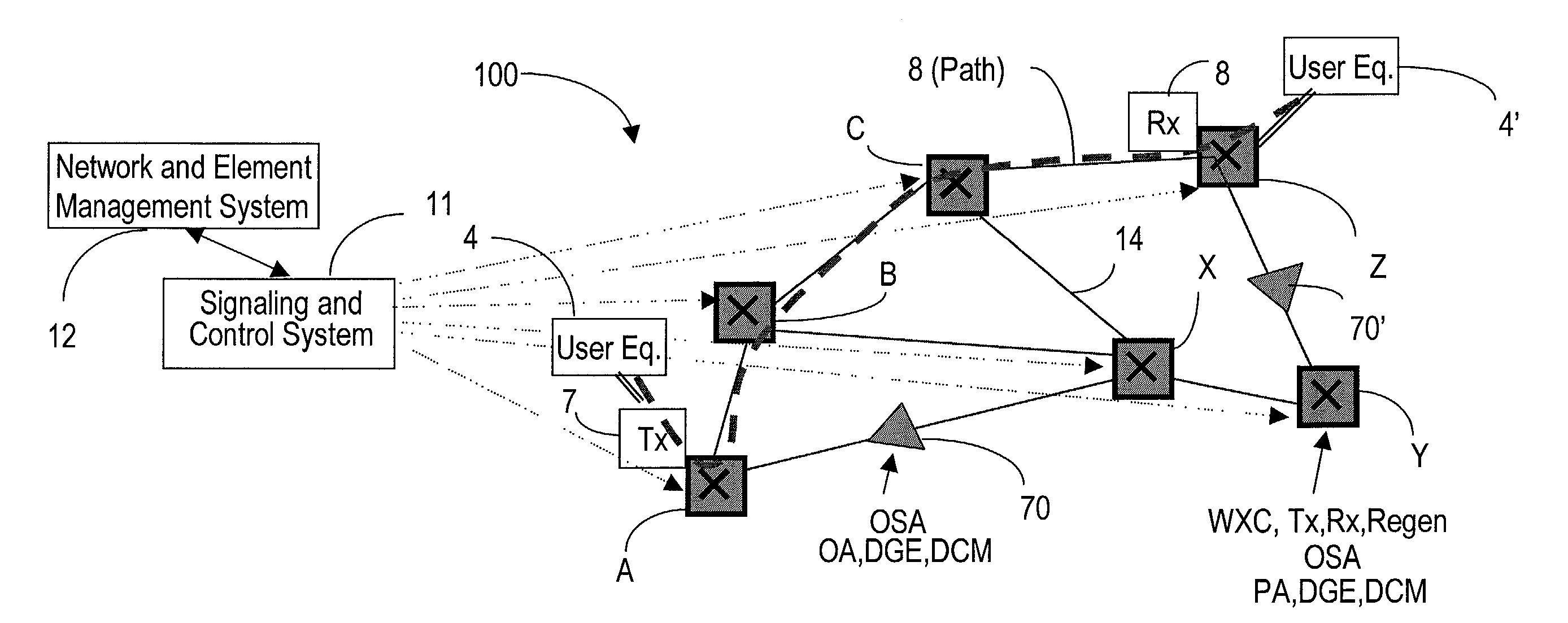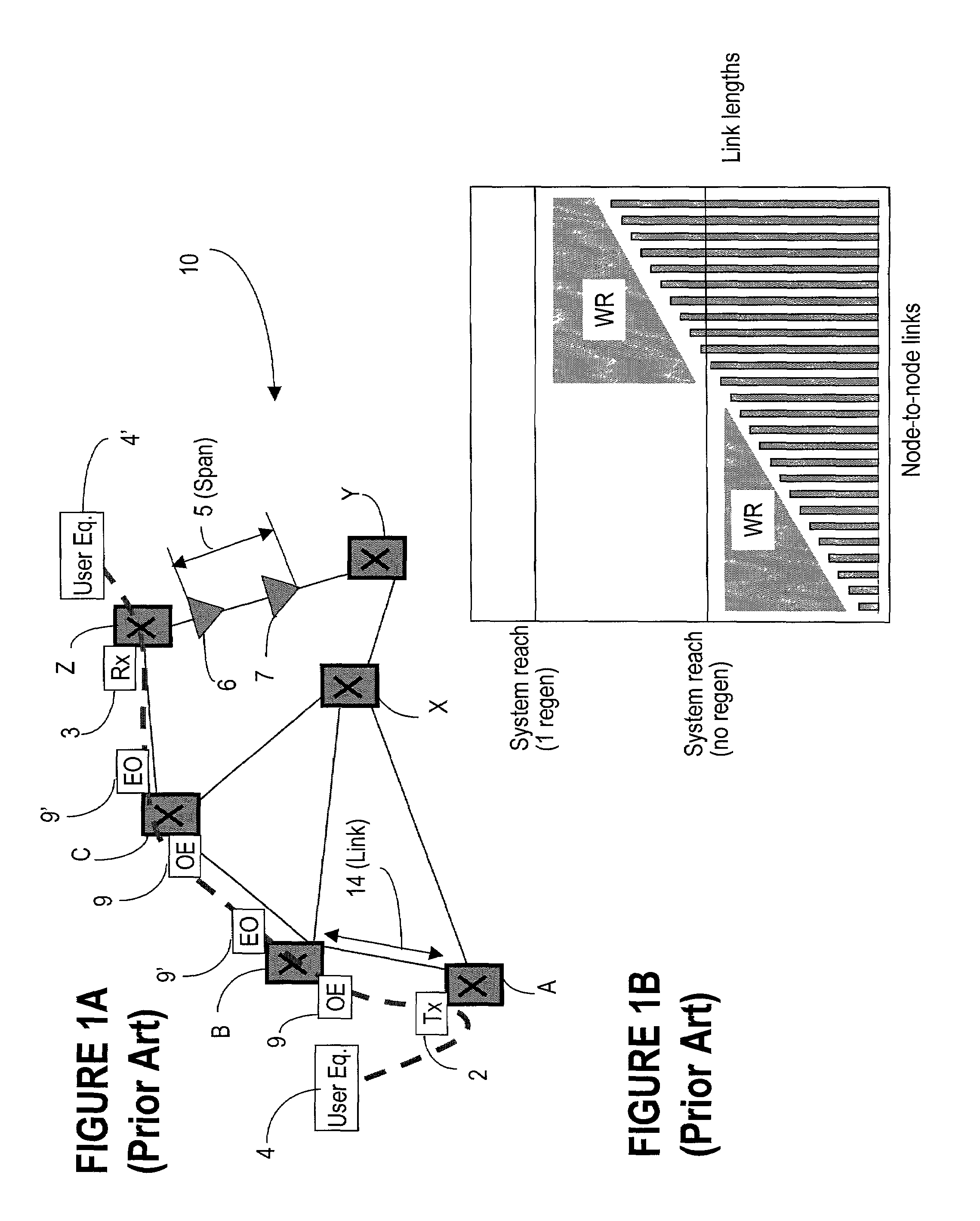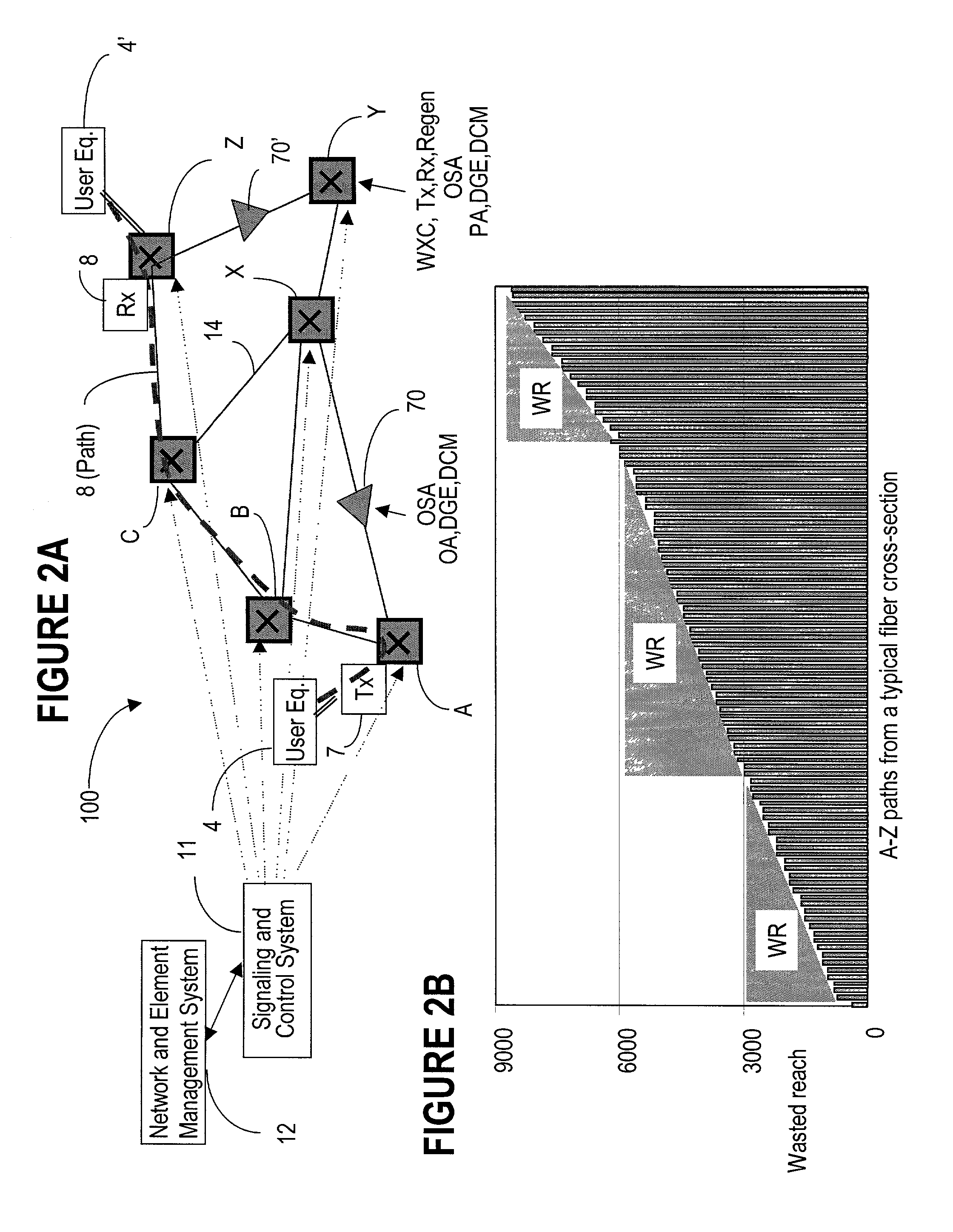Wavelength assignment in an optical WDM network
a wavelength assignment and optical wdm technology, applied in the field of optical wdm networks, can solve the problems that traditional span equalization methods cannot be performed in agile networks, and achieve the effects of less costly and more reliable, increased effective reach, and deployed reach
- Summary
- Abstract
- Description
- Claims
- Application Information
AI Technical Summary
Benefits of technology
Problems solved by technology
Method used
Image
Examples
Embodiment Construction
[0051]Operation of a typical network 10 is described in connection with FIGS. 1A and 1B for a better understanding of the present invention. FIG. 1A shows switching nodes A, B, C, X, Y and Z, a span (section) 5 between two optical amplifiers 6, 7 and a link 14 between two successive switching nodes A and B. FIG. 1A shown only two optical amplifiers for simplification; it is known to provide optical amplifiers on all links, in general at distances between 80-120 km.
[0052]Let's assume that a user wishes to transmit traffic over network 10 between the user equipment 4 and 4′ at the respective nodes A and Z. At node A, the user signal is time division multiplexed (TDM) with other user signals and the TDM signal is converted from an electrical signal into an optical signal, as shown by block 2. This operation is performed using a transmitter, which modulates the TDM signal over an optical carrier. The channel is then wavelength division multiplexed (WDM) with other channels that travel t...
PUM
 Login to View More
Login to View More Abstract
Description
Claims
Application Information
 Login to View More
Login to View More - R&D
- Intellectual Property
- Life Sciences
- Materials
- Tech Scout
- Unparalleled Data Quality
- Higher Quality Content
- 60% Fewer Hallucinations
Browse by: Latest US Patents, China's latest patents, Technical Efficacy Thesaurus, Application Domain, Technology Topic, Popular Technical Reports.
© 2025 PatSnap. All rights reserved.Legal|Privacy policy|Modern Slavery Act Transparency Statement|Sitemap|About US| Contact US: help@patsnap.com



